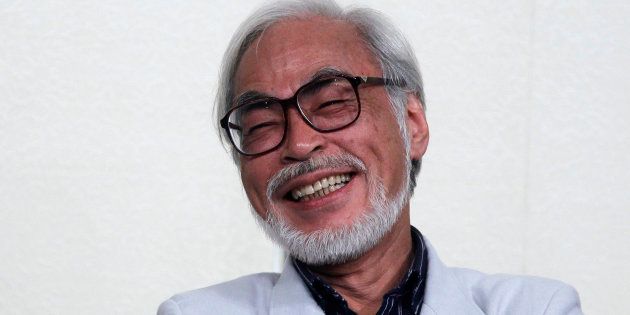
Who doesn't love lying on their back, staring at the passing clouds and imagining that up is down and down is up? That the wisps of white is firm ground and the sand below a temporary, evaporating substance. Its an art we learned as children. Looking sideways. Shifting paradigms. Taking what we see and know and blending it seamlessly with our dreams. Creating a permeable veil between what is real and what could be real. As adults, amongst the noise of everyday life and business, have we perhaps forgotten this? Is it possible to make it tangible again?
Filmmakers know the answer. In Hayao Miyazaki's final cinematic masterpiece "The Wind Rises", a Japanese boy dreams of becoming an aeronautical engineer. One particular dream takes him to a wide open field where he meets the famous Italian airplane designer Caproni. Very surprised that this boy entered into his own dream, Caproni teaches the boy to use this alternate reality as the place where he can prototype all his designs. Beautiful flying machines that could change the world. The boy eventually goes on to become a brilliant engineer but realises that there is much more to learn from this dream than bringing his ideas to life. Caproni asked him once: "Is the wind still rising? We must try to live." The words are from a French poem by Paul Valery and they mean: "When the times get tough, the tough gets going". Crossing over from your dreams to reality requires something else: grit.
"Grit" or perseverance plays a much larger role in success than IQ. The psychologist Angela Lee Duckworth studied the grades of children with very different levels of IQ. She realised that there is no clear correlation between students with high IQ and good grades and children with lower IQ and worse grades. She had children with lower IQ performing very well and the opposite for children with high IQ. This led her to devote her academic career to delving deeper into the best predictors for success.
Her study concluded that "grit" is the distinguishing factor. So when Caproni told the Japanese boy he should try to live, he planted this idea of driving your dreams forward, not giving up and persevering until they've been realised, regardless of the hardships in your way. How does this idea of predictors for success in individuals relate to successful teams in business? And has any established businesses out there given this any thought? Indeed!
Google wondered a while ago what characteristic made their teams successful with their projects. They believed that a better understanding of this idea was key for any business. Their focus was on building teams that succeed every time. The resulting investigation focused on the predictors of success in more than 100 teams in their organisation and they called it "Project Aristotle".
The outcome? They found that no matter the skill level of the individuals, and no matter their experience and education, the key item that made teams succeed was psychological safety. "In the best teams, members listen to one another and show sensitivity to feelings and needs." And this made teams take risks together and made them dream big dreams and execute these dreams together. I see this as a third dimension to dreams, after realising that they can become real and realising that you should persevere with them. You can make them happen when you understand your team's daily lives. There are other companies that understand this as well.
Telling stories flows over into business decisions. That is the ultimate end goal.
A very recent document by Etsy (one of the largest peer-to-peer e-commerce sites) alluded that they have adopted this idea completely. They call this document the "Debriefing Facilitation Guide". The guide aims to make teams more efficient by promoting psychological safety after project failures or setbacks with the key question: "What can we learn not by asking what people didn't do, but what they actually did and how they perceived their world at that time". By approaching people in this way, you discover that each person has their own personal and somewhat shared dreams with colleagues and that these dreams are manifested in the stories they tell a business. What then happens when you've listened to each person's story?
Listening to people's stories cements a business together. They speak to the direct world we operate in as innovators, technologists, dreamers, engineers, business developers, marketers and data scientists. They give hope. Telling stories flows over into business decisions. That is the ultimate end goal. Yes of course you'll say "we have to build a product" and we "have to make profit", but those things are implied. Because you see, this is a compelling feedback loop that businesses, and you and I are in: Telling a story gives perspective and understanding. And when there is understanding, we can dream together more efficiently. Dreaming efficiently means making our dreams real. And when our dreams are efficient and real, we become more willing and open to listen to more wonderful stories. Our biggest adversary in this? Mediocrity.
It is very easy to get your paycheck every day. You just have to show up at work. What will bring you sincere and deep-found happiness in your work and in your team is realising that you have the opportunity to dream, change the status quo and be inventive to the scale of representing the state of the art in your business. Some people get this right.
Dhanurjay "DJ" Patil, the U.S. Chief Data Scientist in the White House Office of Science, has this mission on his LinkedIn profile: "Responsibly unleash the power of data for the benefit of the American public and maximise the nation's return on its investment in data." Patil kept a note in his pocket with key ideas on how to proceed with his dreams. How to turn the vast open space where Caproni met the Japanese boy into ideas that would shape the American government. The note says:
Dream in years, plan in months, evaluate in weeks. Prototype for every idea
Build a product for every 10 prototypes
Engineer for 100 prototypes at a time.
What is required to cut the timeline in half? What needs to be done to double the impact?
What then ties Caproni, the Japanese boy, Angela Duckworth and Patil's ideas together? How essential it is to dream, and how essential it is to understand that the veil between our dreams and reality is in fact very thin. We need only to start living as the wind is rising.
